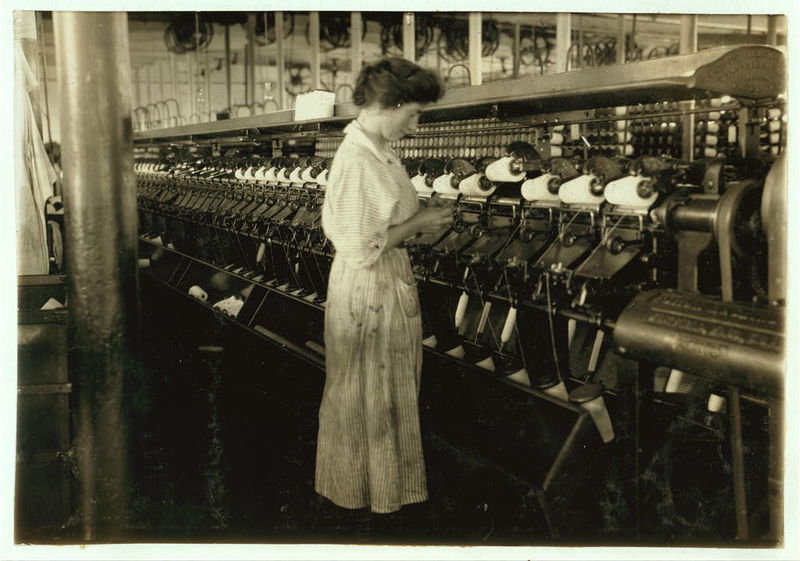Contemporary Textile Production
At the time of the spinning wheel’s surge in popularity, the contemporary machinery had moved along from hand spinning to machinery. Instead of a personal, compltely manual-labor work, we see the factories of capitalist production take over their role. Instead of working against a single machine, controlling their own thread, these women confront machines, a vast, impersonal, and gigantic apparatus that they attend to.
The spinning wheel was still in use in the time when these machines and systems came into being. As we can see, this production is more efficient, producing more than a spinning wheel ever could. Yet as productive as these machines were, they also created a marked difference between the older way of living and the new, a space which led the way for the social value of the spinning wheel to flourish.

